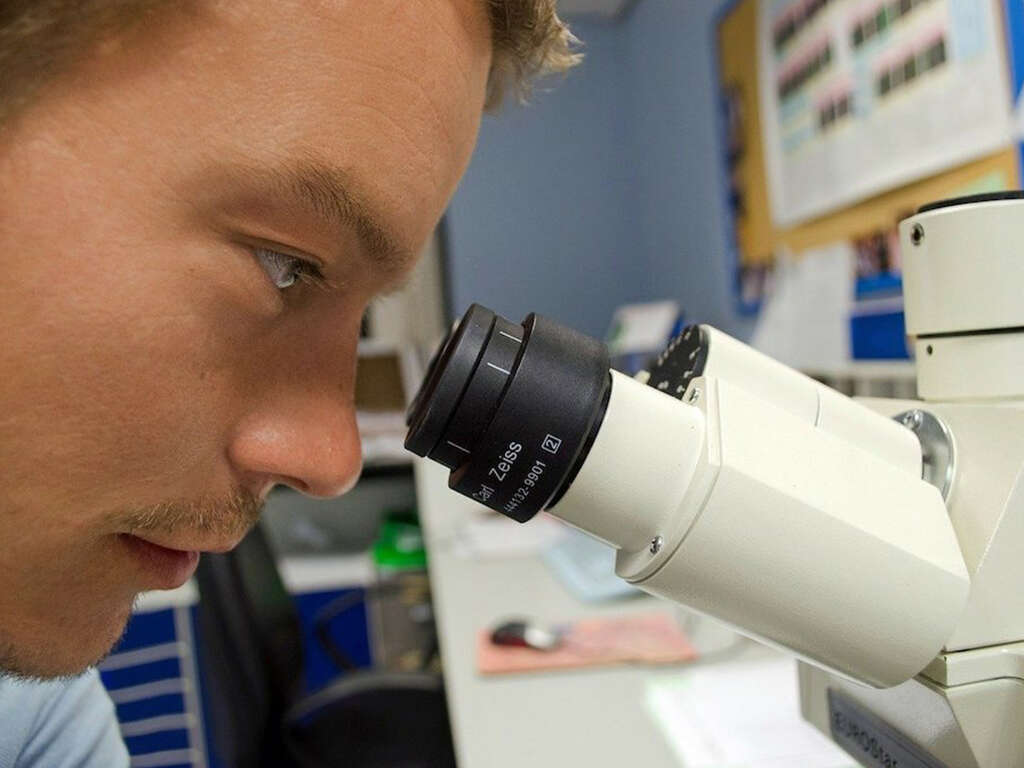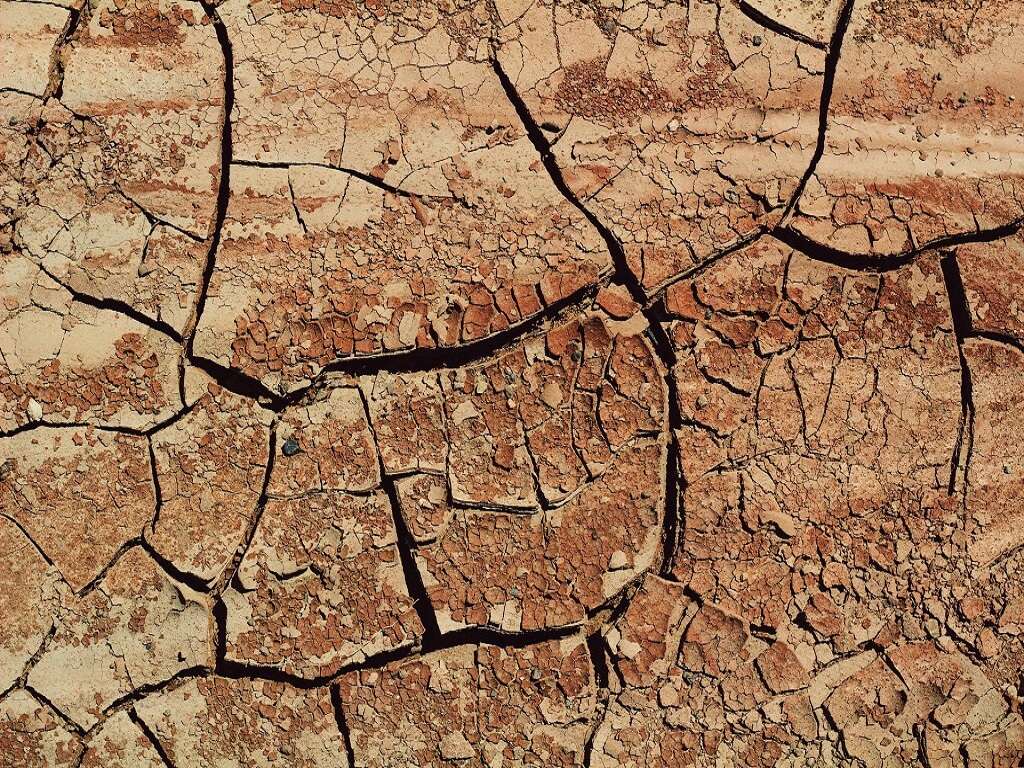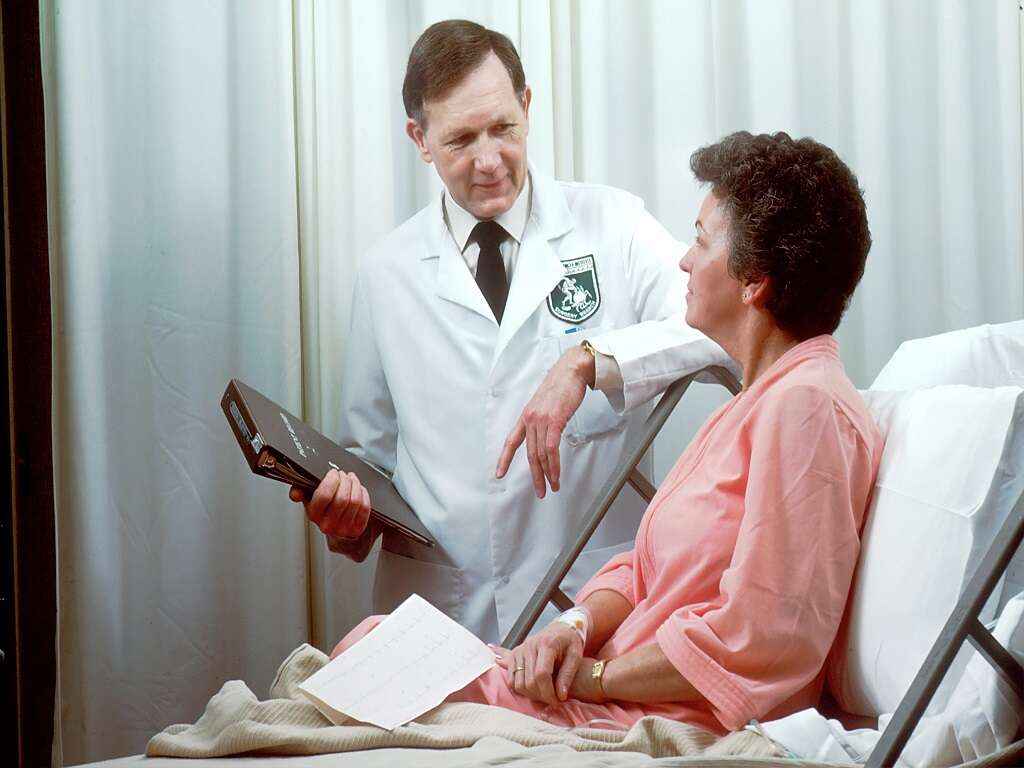10 Squamous Cell Carcinoma Symptoms
The squamous cells are a certain type of skin cell that compose the middle and top layers of our skin. Squamous cell carcinoma, sometimes referred to as carcinoma of the skin or squamous cell carcinoma of the skin, is a particular type of cancer that affects these particular skin cells. The condition is not usually fatal but can become quite aggressive in certain situations. If you don’t get the condition treated properly then it can spread to other areas and lead to other, more serious problems.
The most common cause of skin carcinoma is excessive exposure to ultraviolet radiation. This generally occurs when people are exposed to high amounts of ultraviolet radiation in the form of tanning beds or lamps; carcinomas are not nearly as common when someone is simply exposed to sunlight. Because squamous cells are found throughout the body, the condition can affect many different regions. There are a number of symptoms that are common in the areas where squamous cell carcinomas occur, such as red nodules or a sore, or a rough patch that looks something like an ulcer.
It can be hard to tell exactly when you should see a doctor for squamous cell carcinomas, particularly because this form of cancer can simply look a lot like a scab. If you have a scab that has persisted for more than a month or two, it’s a good idea to check in with your doctor. If you’re experiencing several of the symptoms listed below, that could be reason enough for you to seek medical attention.
Symptom #1: Red Nodules
A nodule is a small swelling or aggregated bunch of cells. Nodules can occur anywhere in the body, but in the case of squamous cell carcinomas, they would occur in the skin. Red nodules are generally distinct from the skin around them.
These nodules are generally firm to the touch and can be unpleasant in appearance if they grow to a significant size. There are, however, many things that could cause these nodules. It’s a good idea to check with your doctor, even if you don’t suspect carcinoma to be the problem.
Symptom #2: Flat Sores
Not every instance of squamous cell carcinoma will result in red, bumpy nodules. Many patients report that the sores that they experience are flat.
They may or may not be a different color than the surrounding skin and, in some cases, they can be the same shade as the red nodules that are familiar with the condition.
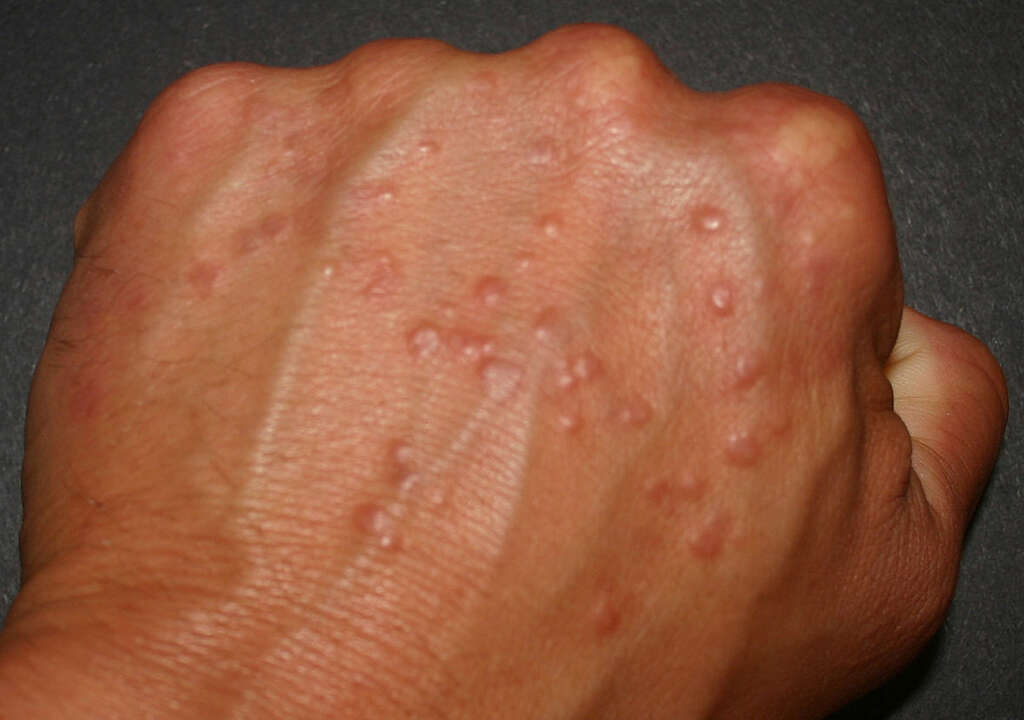
Symptom #3: Skin Scales
Many patients with squamous cell carcinoma do not experience a change in the texture of their skin, only noticing the flat sore. Others, however, may experience the development of scales or a scale-like crust over these sores.
Generally, if you’re experiencing a lingering scaly texture on your skin, this is a sign that you should seek help from your healthcare provider. This could be a sign of something less dangerous like eczema, but it’s important to get it checked out regardless.
Symptom #4: New Blemishes on Old Wounds
Generally, when a person’s body heals from an injury, the area remains healed. If a wound continues to bleed or scab, it’s an indication that the injury hasn’t fully healed.
Squamous cell carcinoma is interesting because it goes against this general rule. If you notice the emergence of a new sore or a raised bump at the site of an injury that has already healed, such as an old scar or an ulcer, this could be an indication that you’re developing squamous cell carcinoma.
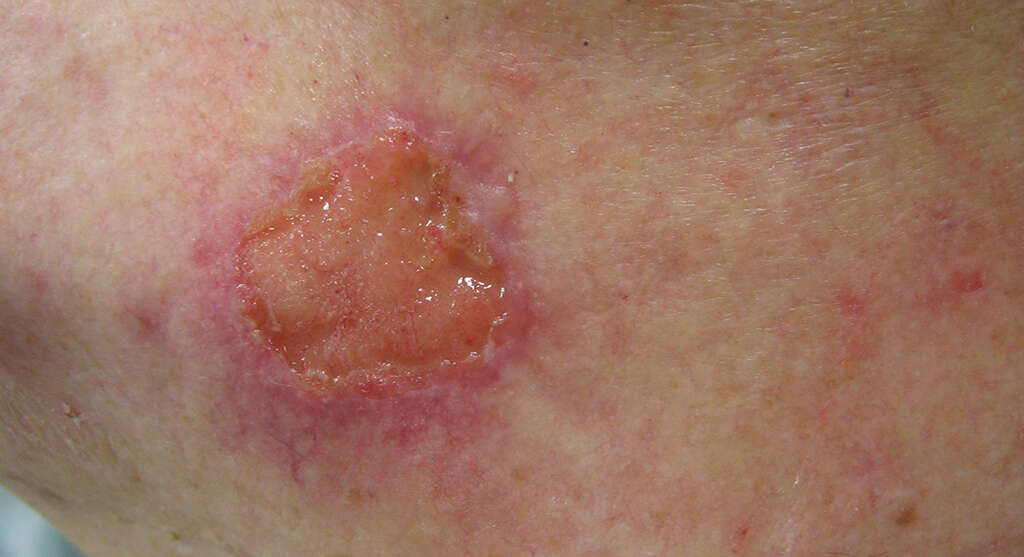
Symptom #5: Scales on Lips
Some people report experiencing scales over the flat sores on their skin, but other patients with squamous cell carcinoma may notice problems on their lips. Like many other areas on the body, the lips have squamous cells and patients have reported experiencing scaly patches develop on their lips.
These scaly patches may progress and become an open sore. This is certainly an indication that you should seek input from your medical doctor.
Symptom #6: Sores in the Mouth
It’s not just the skin outside of our body that has squamous cells. The tissue inside of the mouth contains squamous cells, and is thus susceptible to developing this particular form of carcinoma.
In many patients, the condition attacks the inside of the mouth resulting in a red sore or a rough patch emerging inside the mouth. This can be hard to identify as a carcinoma. If the rough patch or discomfort persists for weeks or months, seek medical treatment.

Symptom #7: Wart-Like Sores
Many people find out that they have squamous cell carcinoma when they develop a wart-like sore somewhere on their skin.
Unfortunately, the most common place for these wart-like patches to emerge is on the genitals or on the anus. Not only is this extremely uncomfortable for many people but it can be hard to identify.
Symptom #8: Easy Bleeding
Squamous cell carcinoma can attack people anywhere on their skin, but it can be hard to tell at first whether the resulting sores and blemishes are actually the result of squamous cell carcinoma.
One telling symptom is the way that these areas tend to bleed rather easily. If your skin bleeds as a result of light scrapes or bumps, you may be developing a serious condition such as carcinoma.
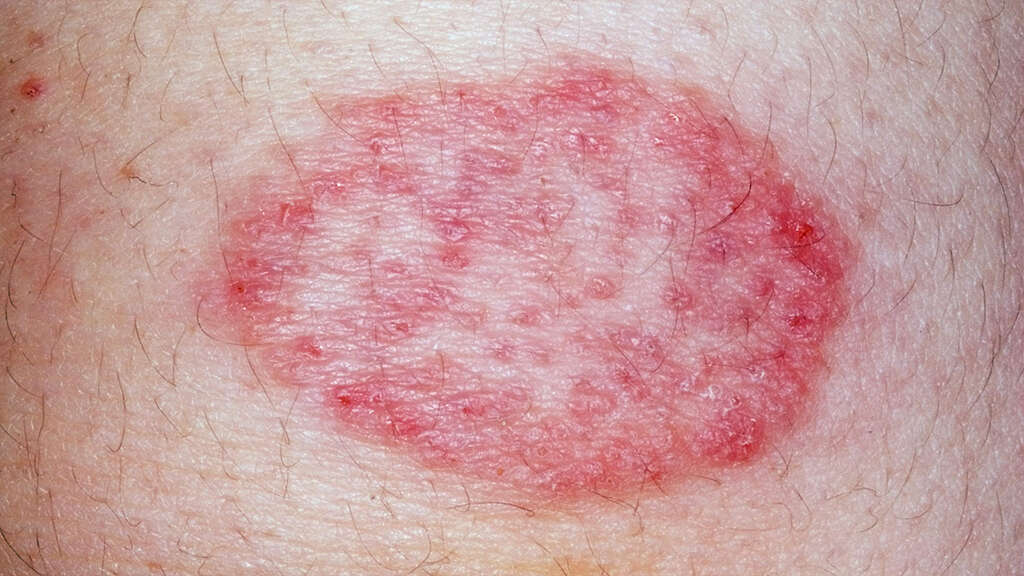
Symptom #9: Cratered Bumps
Another way that squamous cell carcinoma can manifest is with cratered bumps.
These bumps are simply lumps on the skin that have a lower area or a depression in the center. These may or may not be painful.
Symptom #10: Ulcer-Like Sores
Another thing that patients with squamous cell carcinoma often experience is the emergence of ulcer-like sores that don’t heal.
They may remain as open wounds for extended periods of time or, if they do heal, they will return soon after.





